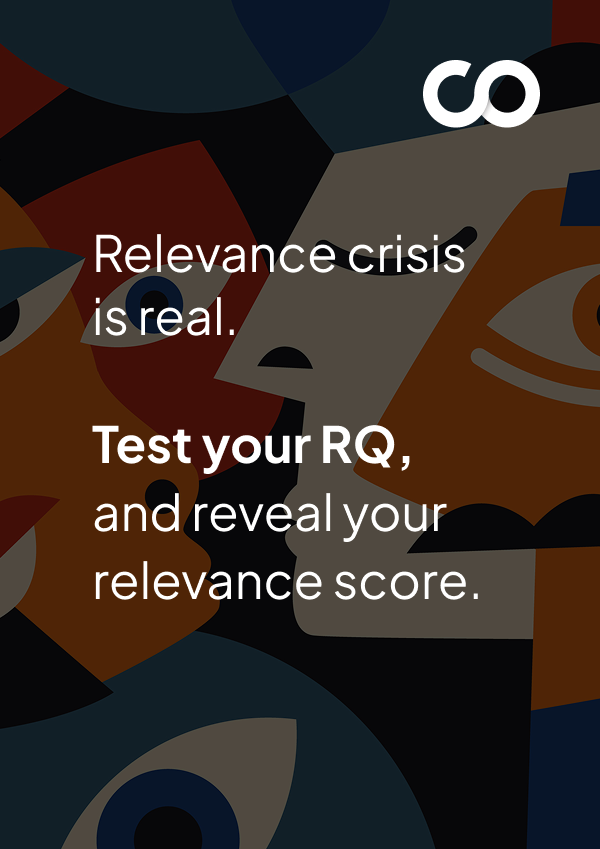Business analytics services
BI and analytics services | Business intelligence and analytics services
Business Analytics Services

Turn Data Into Value
Every business decision — whether it’s pricing changes, marketing spends, demand – supply management or financial forecasting — depends on timely, accurate data. When analytics are delayed, incomplete, or spread across disconnected systems, leaders lose visibility into what’s actually happening. As a result, businesses miss early warning signs like falling margins, rising operational costs, customer churn, and supply chain disruptions.
Our business analytics services address this by building data pipelines, integrated reporting systems, and interactive dashboards that deliver relevant, real-time insights for business leaders. These systems improve visibility into key business functions — including sales performance, customer trends, operational bottlenecks, and financial metrics.
We work with widely adopted BI platforms such as Power BI, Tableau, and Looker, ensuring seamless integration with your existing systems like CRM, ERP, financial applications, and marketing platforms. This creates a connected analytics environment where critical data points are consolidated, processed, and presented in actionable formats.
Our services extend beyond implementation. We provide continuous monitoring, system performance reviews, and analytics optimisation to ensure your reporting environment evolves with business needs and market changes.

Get Codewave’s Business Analytics Precision.
70 - 80%
Client Retention Rate
50 - 60 %
Project Profitability Margin
75 – 85%
Utilization Rate
Download The Master Guide For Building Delightful, Sticky Apps In 2025.
Build your app like a PRO. Nail everything from that first lightbulb moment to the first million.
Going By Data Or The Gut Feel?
With our analytics services, you get 95+% data accuracy which helps you eliminate guesswork. We turn your raw numbers into real, actionable business moves.
Most businesses run on disconnected systems, such as sales, finance, operations, and customer data stored in separate applications. This makes it difficult for decision-makers to access consistent, timely information when needed. Reporting delays, duplicated efforts, and conflicting KPIs become routine problems.
We solve this by building a centralized, scalable data warehouse that consolidates information from all your operational systems, including POS, CRM, ERP, marketing platforms, and finance tools, into a single, reliable source of truth. Our process starts by mapping your data sources and operational workflows. Then, we implement secure, role-based access controls using platforms like Snowflake, BigQuery, or Amazon Redshift, selected to match your infrastructure and scalability requirements. We structure data in clean, organised layers, raw, staging, and curated, so your analysts work only with validated, business-ready information.
Example: A retail chain centralizes POS, inventory, and customer feedback into one warehouse. Now, 30+ store managers can access real-time reports directly, without waiting in the head office, enabling faster stock adjustments, better demand forecasting, and quicker in-store decisions.
If your teams are still manually updating dashboards or exporting data from tools, you’re sitting on inconsistent, error-prone insights. Disconnected systems and outdated data kill decision velocity.
We build robust, automated ETL pipelines that extract raw data from your CRMs, payment systems, and product databases using tools like Fivetran, Apache NiFi, or Talend. Then, we apply business logic and data validations via dbt, standardizing formats, flagging anomalies, and transforming data into analytics-ready form. Finally, we schedule secure, fault-tolerant loads using Airflow, ensuring your warehouse always reflects the latest business state; hourly, nightly, or on demand.
For example, a fintech company will connect loan applications, credit scores, and transactions into a unified pipeline. Data will refresh hourly, powering real-time risk dashboards used by underwriters and fraud teams to act faster and more accurately, without waiting for manual updates.
Poor data quality leads to flawed decisions and regulatory risk. Inconsistent records, duplicates, and missing fields distort reporting and increase exposure — especially in sectors like healthcare and finance.
We run governance audits to proactively identify and resolve quality issues. Great Expectations validates schema integrity and enforces quality thresholds, preventing bad data from contaminating analytics. Collibra defines ownership, access rules, and approval workflows, ensuring data governance is clear and traceable. Monte Carlo continuously monitors freshness, volume, and schema drift, instantly flagging issues so nothing slips through. These automated checks maintain data reliability, generate audit trails, and improve operational trust without adding manual workload.
For instance, a regional clinic network can run biweekly audits across 10 branches, catching outdated contact details and mismatched patient IDs. The system will auto-correct records and sync updates, cut billing delays, improve patient turnaround times, and ensure compliance reporting stays audit-ready.
Static reports can’t anticipate what’s next. Without forward-looking insights, leaders risk misallocating resources, reacting too late to shifts in demand, or missing emerging trends.
We build predictive models that surface what’s likely to happen; so you act early, not after the fact. Historical and real-time data is ingested into Snowflake, BigQuery, or Redshift. Featuretools automates variable creation, while models train on scikit-learn or Prophet, tailored to your KPIs. MLflow manages versions, tracks performance, and triggers retraining based on drift. Outputs feed BI dashboards with scenario modeling and confidence intervals built in. Pipelines run on Airflow, ensuring forecasts stay current. Alerts flag dips in model accuracy, so course correction is fast.
For example, an e-commerce brand will predict weekend sale demand using past orders, site activity, and social trends. Inventory and staffing plans will auto-adjust daily, reducing stockouts, overtime costs, and last-minute logistics fire drills.
When teams rely on ad-hoc report requests and manual processes, insights arrive too late and lose impact. You need interactive dashboards that anyone can use, without technical friction or delays. We collaborate with you to identify core metrics, craft intuitive layouts, and empower end‑users to explore data live and drive decisions.
We use Tableau, Power BI, and Looker to develop drag‑and‑drop dashboards that anyone can customize. We model data views with dbt, enforce transformations, and schedule updates. Dashboards are embedded with Superset or customizable web embeds, complete with role‑based access, dynamic filters, and mobile compatibility. This ensures each team sees accurate insights in a secure, user‑friendly interface.
For example, your marketing team will access real-time dashboards showing campaign spend, conversions, and channel ROI. Instead of submitting requests, managers will tweak filters, compare trends, and reallocate budgets instantly—reducing delays and boosting campaign performance.
In today’s fast-paced business world, waiting for data to catch up can be a dealbreaker. What if you could act the moment data comes in? We make that happen by setting up real-time data streams that let you see events and trends the second they unfold.
We start by identifying which data points matter to you at the moment; like cart drop-offs, failed transactions, or low stock alerts. Then, we build a real-time data pipeline using tools like Kafka or Amazon Kinesis to collect that data the second it’s generated. We process it with Apache Flink or Spark Streaming; so it’s clean, aggregated, and ready to use almost instantly. Finally, we push this to your dashboards or alerting systems using Grafana, with custom alerts via Slack, email, or SMS.
For example, your e-commerce platform will detect failed payments as they spike. Within seconds, alerts will notify engineering teams to route traffic to a backup gateway—minimizing drop-offs and recovering revenue in real time.
Using outdated analytics systems can slow down insight delivery, increase costs, and limit scalability. If your teams rely on legacy tools for reporting and data crunching, it creates delays, inefficiencies, and security risks. We help you move all your analytics workloads to a secure, high-performance cloud setup, without breaking your workflows.
We start by auditing your current stack; databases, reports, pipelines, and identify what can be lifted, modernized, or rebuilt. Then we migrate everything to a cloud-native platform like BigQuery, Redshift, or Azure Synapse. We also set up data connectors and access controls to ensure your reports run faster and your data stays protected.
For example, your retail analytics platform will move from an outdated server to the cloud. Post-migration, data processing will accelerate during peak sales periods, enabling teams to access timely insights and optimize inventory and marketing strategies in real time.
Relying on manual reports can slow down decisions, create data silos, and burn hours of productive time. If your teams are exporting spreadsheets daily just to track basic KPIs, it’s time to automate. We help you build a reporting system that runs on schedule, delivers insights automatically, and alerts the right people at the right time.
First, we understand which reports you depend on; sales performance, marketing ROIs, inventory alerts. Then we build auto-refreshing dashboards and trigger-based reporting systems using tools like Power BI, Google Looker, or Tableau. You’ll stop checking in, reports will come to you.
For example, your marketing team will transition from hours of manual report creation to receiving real-time campaign performance updates. This automation will free their time, allowing them to focus on strategic initiatives instead of routine reporting tasks.
Static Dashboards Are Dead.
Our business analytics and prediction solutions cut through the noise, delivering 100% clarity with real-time data. We transform complex data into simple, actionable insights in real-time, so you know what needs your attention.
We use predictive models to estimate future customer value, segmenting users by purchase patterns, frequency, and retention. Python-based ML pipelines analyse transactional data to assign dynamic value scores. BigQuery and dbt handle historical data prep, while Tableau surfaces high-CLTV cohorts. These insights personalise offers, cut acquisition costs, and improve long-term profitability.
Example: An online grocery brand identifies repeat buyers with high cart values and targets them with subscriptions and loyalty perks, boosting retention and revenue without increasing ad spend on one-time shoppers.
Accurately predict inventory needs and align procurement with real-time demand. Prophet and XGBoost process historical sales, seasonality, and external factors like weather or holidays. Automated pipelines via dbt and Snowflake adjust SKU stock dynamically, preventing overstock and ensuring availability during demand spikes.
Example: A retail chain forecasts a fan sales surge ahead of a heatwave. The system auto-redirects shipments to high-demand stores, preventing stockouts and reducing excess inventory in cooler areas.
Track profitability, cash flow, and cost drivers with real-time insights. Power BI and Domo consolidate ERP data, while Scikit-learn-based models forecast trends. Dashboards highlight key metrics like expenses, margins, and liquidity, enabling faster, data-led decisions.
Example: A manufacturer detects rising raw material costs early. The finance team renegotiates rates and adjusts procurement before margins are affected — no need to wait for quarterly reports.
Raw Data To Real Decisions
We clean, structure, and analyze your data with laser focus, turning chaos into clarity. The result? Insights that aren’t just accurate, but ready to drive serious, smart business moves.
We start with a detailed audit of your data environment. We identify every data source your business uses— CRM, ERP, finance systems, marketing tools, inventory platforms, and third-party APIs. Then, we assess how this data flows, where it breaks, and whether it’s clean, complete, and reliable.
Real-time data streams are set up using Apache Kafka, while batch data is verified with SQL queries to check for accuracy, consistency, and gaps. This initial process gives us a clear view of what’s usable, what’s missing, and what needs fixing before we build your analytics framework.
Once we’ve mapped your data, the next step is to bring everything together into one organised, reliable system. We use Apache NiFi to efficiently pull data from all your business applications — CRM, finance, marketing, inventory, and other platforms — into a central repository. To handle both structured and unstructured data, we implement a data lake architecture that can scale as your business grows. This centralised setup ensures every team has access to accurate, up-to-date information in one place. It removes data silos, cuts down on duplicate reporting, and enables faster, more informed decisions based on a complete, connected view of your business.
Reliable analytics depend on reliable data. We prioritise data quality from the start, using Python scripts to systematically identify and remove inconsistencies, duplicates, and irrelevant records. To strengthen this further, we integrate Talend Data Quality for automated validation, rule-based checks, and anomaly detection. This ensures your data is accurate, consistent, and ready for advanced analysis — preventing misleading reports and costly mistakes before they happen.
We use R and Python to build sophisticated predictive models based on the data you’ve trusted us with. Using techniques like regression analysis and time-series forecasting, we can predict everything from market demand to inventory needs. So, when you’re making strategic decisions, you’re no longer guessing—you’ve got data-backed forecasts that give you the upper hand.
Next, we convert those insights into clear, interactive dashboards. Using tools like Tableau and Power BI, we build visually intuitive reporting systems that display your most important KPIs in real-time. These dashboards allow decision-makers to track performance, identify trends, and drill down into specific operational or financial metrics as needed, ensuring that current, connected data inform every decision.
Business environments evolve, and your analytics should too. We implement continuous monitoring processes to track the accuracy and relevance of your analytics models over time. By integrating Looker and BI platform monitoring tools, we measure performance, identify model drift, and adjust parameters as new data patterns and business requirements emerge. This ensures your decision-making remains sharp, adaptive, and aligned with your operational goals.
Built on the Best in Analytics Tech.
We use the latest analytics stack to make your data work smarter for you.
| Data Collection & Integration |
|
| Data Cleaning & Quality Assurance |
|
| Data Storage & Management |
|
| Data Visualization & Reporting |
|
| Predictive Analytics & Modeling |
|
| Machine Learning & AI |
|
| Big Data Analytics |
|
| Real-Time Analytics |
|
| ETL (Extract, Transform, Load) |
|
| Business Intelligence (BI) |
|
Codewave: App Care, For Every Industry.
We’ve worked with 400+ businesses across 15+ industries—healthcare, finance, retail, and more. Your app runs 40% faster with seamless updates and bug fixes. We handle the tech, so you can focus on scaling.
| Healthcare | Business analytics helps healthcare providers make faster, data-backed decisions. Analytics platforms monitor patient vitals, track treatment outcomes, and predict disease risks using patient history and demographics. Hospitals also use analytics to manage ICU beds, staff allocation, and medical supplies more efficiently by identifying real-time usage trends. Example: A hospital predicts ICU bed demand using past admission trends. This helps optimize triage and reduce peak-hour wait times. |
| Transportation | Business analytics helps transportation providers make real-time, data-driven decisions. Analytics platforms optimize route planning, monitor vehicle health, and track fuel consumption using GPS and sensor data. Logistics teams also use dashboards to monitor fleet movement, identify delays, and proactively manage maintenance schedules by analyzing usage patterns and external conditions like traffic and weather. Example: A logistics company can use live traffic and weather analytics to dynamically reroute delivery trucks. This reduces delays and ensures more accurate ETAs during peak hours or adverse conditions. |
| Energy | Business analytics helps energy providers make informed, demand-driven decisions. Analytics platforms forecast electricity consumption by analyzing historical usage patterns, weather fluctuations, and time-of-day trends. Utility companies also use real-time dashboards to detect load imbalances, optimize grid efficiency, and prevent energy loss through anomaly detection and predictive maintenance. Example: A utility provider forecasts peak energy demand using weather and usage trend data. It then adjusts power distribution to stabilize grid performance and prevent blackouts during high-consumption periods. |
| Retail | Business analytics enables retailers to drive higher sales and optimize operations. Analytics systems track product performance, pricing effectiveness, and customer buying behavior across regions and channels. Retail teams use dashboards to monitor real-time inventory levels, campaign results, and sales conversions to quickly act on demand shifts. Example: A retail chain uses hourly sales data to identify fast-moving SKUs and triggers auto-restocking. This reduces stockouts and improves revenue during peak shopping hours. |
| Insurance | Analytics helps insurers assess risk, detect fraud, and monitor operational performance. Platforms analyze claims history, customer profiles, and behavioral patterns to identify anomalies and pricing opportunities. Dashboards visualize policy churn, claim frequency, and segment-wise profitability to guide underwriting and retention strategies. Example: An insurer detects a spike in suspicious claims in a specific region. It adjusts investigation protocols and recalibrates premiums to reduce exposure. |
| Agriculture | Analytics enables precision farming by processing satellite imagery, soil sensors, and weather data. Platforms help monitor crop health, forecast yields, and plan irrigation schedules based on data-driven insights. Farmers also use analytics to manage resources and reduce waste during harvesting and distribution. Example: A farm uses past yield data and current climate trends to predict harvest volume. This helps plan storage, transport, and market pricing more efficiently. |
| Education | Analytics helps educational institutions make informed decisions by tracking student performance, engagement, and retention risks. Platforms monitor attendance patterns, test scores, and participation metrics to identify learning gaps and predict dropout probability. Institutions also use analytics to personalize curricula and optimize faculty allocation based on performance trends. Example: An ed-tech platform analyzes quiz scores and engagement data to recommend tailored learning modules. This improves comprehension and reduces dropout rates through targeted interventions. |
What to expect
What to expect working with us.

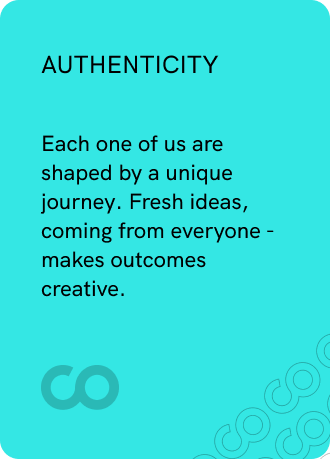
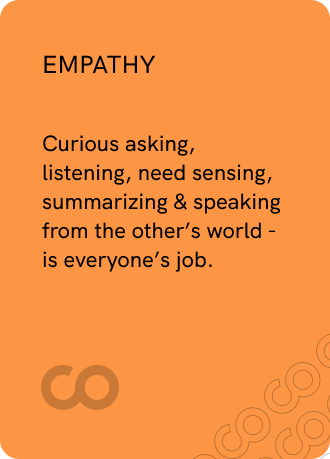

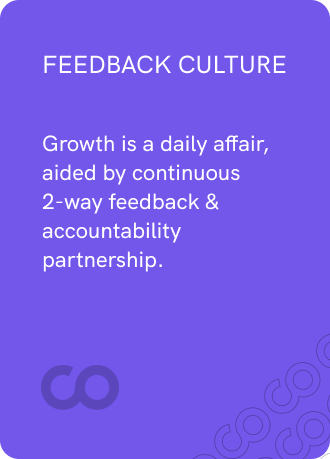
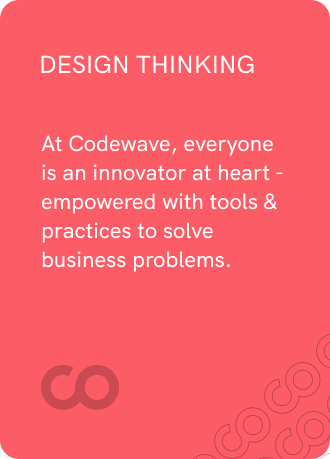
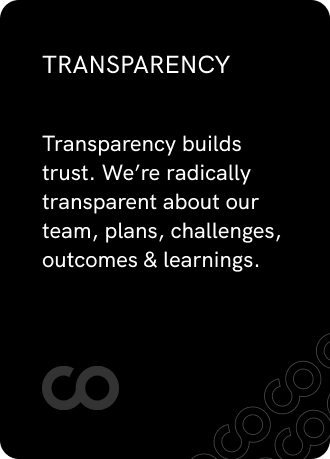
We transform companies!
Codewave is an award-winning company that transforms businesses by generating ideas, building products, and accelerating growth.
Frequently asked questions
Business analytics services help companies make smarter decisions by converting raw data into insights. These services improve operations, reduce waste, and uncover opportunities that drive growth, making them essential in today’s data-driven business environment.
Business intelligence focuses on past performance. Business analytics goes further by using predictive models to recommend future actions. Together, they give a full view; what happened, why it happened, and what should happen next.
Healthcare, retail, logistics, energy, and finance depend heavily on business analytics services to monitor performance, reduce risks, and improve service delivery. These industries rely on data-backed decisions to stay competitive and efficient.
It uses structured data like CRM and ERP systems, and unstructured data such as social media and support tickets. Clean, organized data allows analytics to work accurately and generate relevant insights for decision-making.
BI and analytics services commonly use Power BI, Tableau, SQL, Python, and cloud platforms like Azure or AWS. These tools support data preparation, analysis, and visualization, all key components of effective analytics workflows.
We align business analytics services with your company goals. Our team audits systems, identifies data gaps, and builds solutions that improve decision-making across departments using real-time dashboards and measurable KPIs.
Unlike generic vendors, we blend business intelligence and analytics services with design thinking. Our solutions are easy to use, integrate into your daily operations, and give your team answers instead of raw data.
Yes, we build real-time analytics pipelines that help you act instantly. Whether you’re managing inventory, tracking user behavior, or monitoring KPIs, our tools deliver fast, accurate insights your teams can rely on daily.
We clean disorganized data, fix integration issues, and make reporting meaningful. Our team ensures your business analytics services work with accurate, connected data so you get insights that actually improve business outcomes.
Yes, we create user-specific dashboards for sales, finance, operations, and support. These dashboards deliver focused insights, simplify reporting, and help teams act fast without waiting for BI and analytics teams to step in.
Absolutely. We use forecasting models to predict trends, detect risks, and automate decisions. These analytics help you avoid problems and capture opportunities before they happen, improving agility and confidence across your teams.
We work in agile sprints and deliver results in weeks, not months. You get access to early insights fast, with continuous updates that ensure your business intelligence and analytics services evolve with your needs.































































